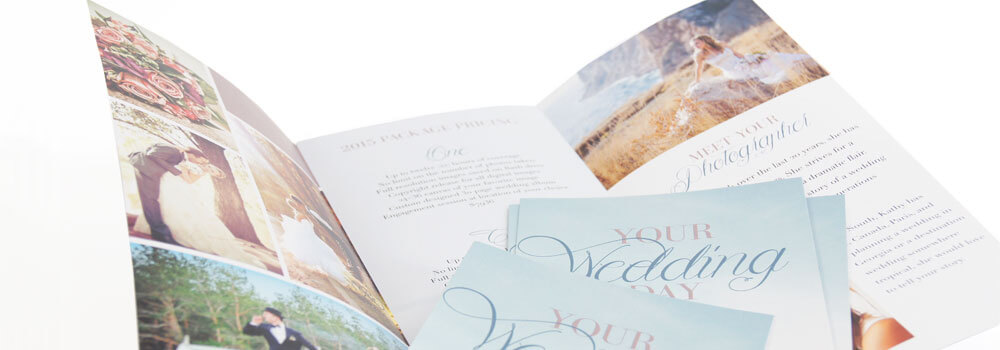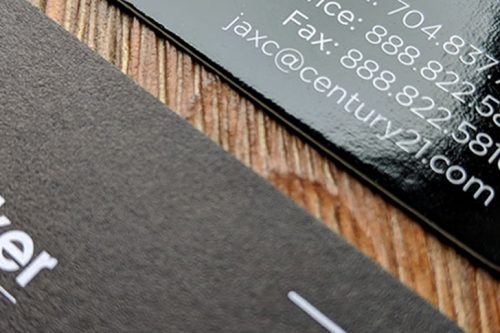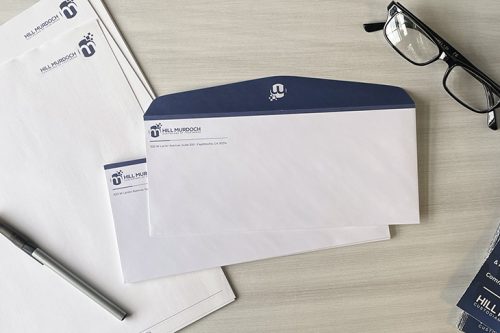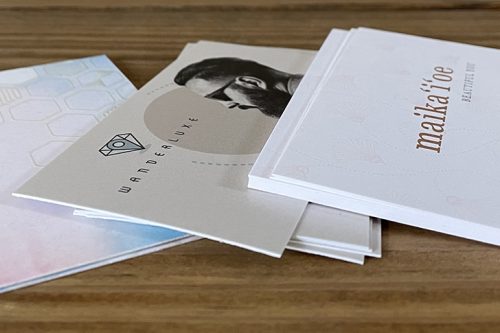Printing brochures are great for discussing and displaying what your business or organization has to offer. So, it’s important to make sure you create your business brochure appropriately, making it a dynamic marketing tool for any company.
We’ve included some helpful tips, from selecting the right size to the appropriate content, to make your custom brochures a success.
Creative Brochure Design
The design is significant as it can attract potential customers. One that’s designed poorly can turn off the readers and possibly make your business look unprofessional. It’s best to keep the design clear and simple.
You’ll want to make sure the images and content are easy to read and most importantly, able to be grasped quickly. Including colorful graphs or statistics can be helpful, but make sure the consumer can easily understand the message you want to convey. A confused consumer can result in a lost sale. If you’re having a problem coming up with a design or have no idea where to start, our graphic designers will be happy to assist.
The Cover
Selecting the image and design for the cover is important. Similar to a thesis statement, your goal is to grab the reader’s attention and have them continue to read them. Without a good looking cover, it can be overlooked. The cover should create an emotional connection, from curiosity to excitement. Be creative, so it will make people want to continue reading.
The Content
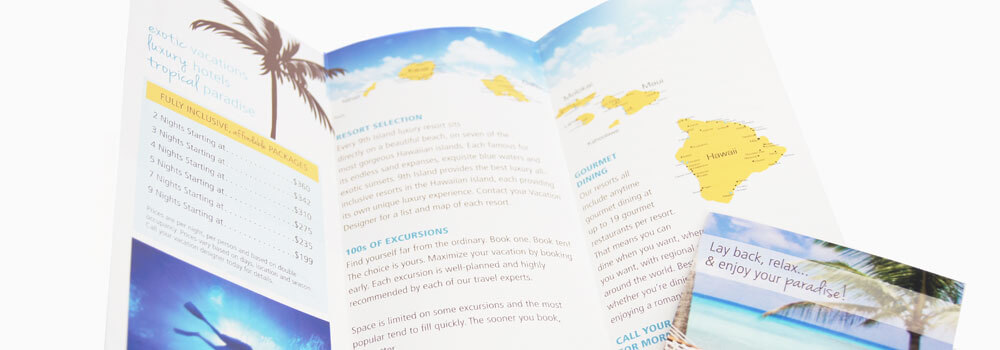 Now that you have captured your reader’s attention, it’s time to create the content. The next step is to present your message and offers in detail. You’ll want to include material that brings awareness, drives sales, or boosts repeat purchases. Once you have determined the purpose of the business brochure, you’ll have a better understanding of how to arrange the content and ranking of their importance. One thing to remember, however, is that people like brief content. Try to remove all fluff and unneeded text. The shorter and to-the-point it is, the more likely people will read all the content.
Now that you have captured your reader’s attention, it’s time to create the content. The next step is to present your message and offers in detail. You’ll want to include material that brings awareness, drives sales, or boosts repeat purchases. Once you have determined the purpose of the business brochure, you’ll have a better understanding of how to arrange the content and ranking of their importance. One thing to remember, however, is that people like brief content. Try to remove all fluff and unneeded text. The shorter and to-the-point it is, the more likely people will read all the content.
Folding Options and Brochure Sizes
A popular layout that’s chosen most often is the basic tri-fold. It is most commonly included in a marketing campaign, and it is great for showcasing a business, promoting a brand, or highlighting products and services effectively. Depending on the use, there are other folding options and sizes to select from, including the half fold, z-fold, roll fold, and more. For more details about each folding option, check out the different folding options we offer.
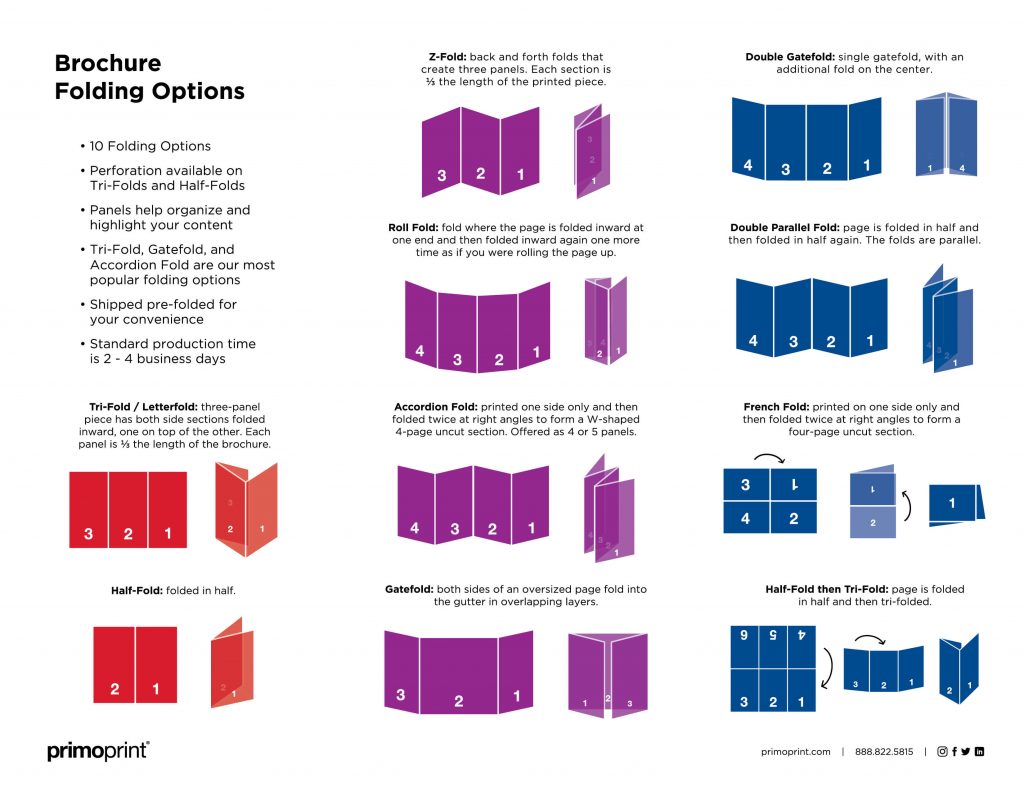
The size should be long enough to cover the subject, but short enough to make them interesting. The more products and services your business offers, the brochure size tends to be larger to accommodate the information. Keep in mind, if your business offers thousands of products or services that doesn’t mean you need to try and include all of them. You can always send readers to your website for more details or to share information on topics not covered in the brochure.
Paper Stock
Once printed, they tend to have a longer shelf-life than other marketing materials, so the paper stock you choose is critical. Often, this can be overlooked. Selecting the overall thickness of the paper stock and selecting the coating can play an important role.
We offer different types of paper thickness (100LB, 70LB, and 80LB), and coatings such as aqueous (AQ), satin, Glossy UV, and no coating. Depending on your message and target market, the paper stock can play an essential role in the design. We’ve written a previous blog that may be helpful in choosing the right paper stock.
As you can see, there are a lot of options and variables that can impact the brochure. But when designed properly, your brochure can take you places.
